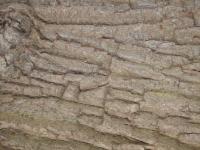What parts does an electric motor consist of?
Whether in the printer, the electric window regulator or in the kitchen mixer, all these devices contain electric motors, which have the task of converting electrical into mechanical energy. You can find out what parts such an engine consists of and how it works here.

An electric motor consists of these parts
- In principle, you only need four components to build a very simple electric motor. It consists of a horseshoe magnet, a wire loop, a power source (battery) and a Kummutator.
- The horseshoe magnet (permanent magnet) provides a constant magnetic field.
- The wire loop must be positioned between the two legs of the horseshoe, whereby it must be able to move freely.
- If you connect this wire loop to the power source, electrons flow through the metal, which cause the coil to also become a magnet, more precisely a Electromagnets.
- Finally, you also need commutators. These parts have the task of reversing the polarity of the current flowing through the coil and thus reversing the poles. Why this is necessary at all will be explained later.
- The structure of this motor with these parts is greatly simplified and is primarily intended to clarify the function of an electric motor. With these parts, the drive would turn, the powerful motors that we get from everyday life know, however, have a more complex structure, with several wire spools and stronger ones Permanent magnets.
Electric motor - the physics behind it simply explained
Electric motors come in different designs. Physical basis of all ...
Function of the electric motor
- As you learned above, an electric motor consists of two magnets, a permanent magnet and an electromagnet. These influence each other, whereby the north pole of the wire loop attracts the south pole of the permanent magnet and each other.
- The attraction of the two poles causes the loop to start rotating. But only to the so-called dead center. This is achieved when the respective opposite poles of the magnets are lying down. They attract each other, preventing continued rotation.
- The commutator comes into play so that the loop can keep turning. This part reverses the polarity of the battery once after each revolution. As a result, the poles are reversed when the polarity is reversed so that the two poles of the same type of the magnets face each other. The poles of the same name repel and set the loop in motion. Constant reversal of polarity prevents the electric motor from coming to a standstill. It would spin until the energy in the battery is exhausted.
How helpful do you find this article?


